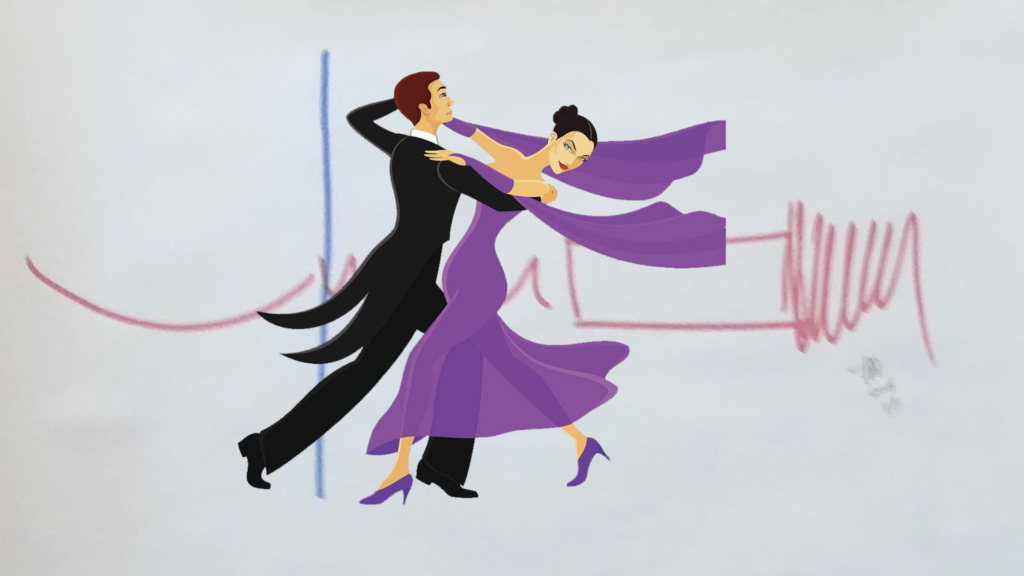
The ZB principle in the Spotlight in this issue is the Blue Line. In a Zero Balancing session, we include coming to the Blue Line as part of getting into position to do a fulcrum. It’s the last step before initiating the fulcrum. We, as practitioners, take the looseness out of the structure until we first connect with the consciousness of our client. We have knocked at their door and they have opened it. We pause. We experience each other and can begin meaningful communication.
As with so much in ZB, the principles can be applied to life at large. For example, many years ago I decided to pursue a long held dream…to learn ballroom dancing. (the “read more” here) I gathered up my courage and started attending beginner level ballroom classes at a local dance studio. Fox Trot, Rumba, Cha Cha, Salsa. As a novice ballroom dancer, I found myself adrift in the unknown territory of right-foot-back and quick-quick-slow; learning dance steps with names like Hesitation, Promenade, and…I kid you not…Pretzel and Hairbrush. Out there on the dance floor Frank Sinatra was singing it his way and I was desperately trying to figure out which of those steps my partner was leading me to do. Despite my best efforts, when he headed east I would invariably head west.
Then one evening, the instructor, a sweet Cuban man alive with grace and style, began to talk about how to communicate through touch.
He said there has to be some tension in the man’s right arm, his hand on the woman’s left scapula. The woman must lean slightly into the man’s hand in order to help maintain that tension as they both move; that tension must be maintained so there can be meaningful conversation. Sound familiar? AHA!!! The Blue Line!! If the tension is dropped, he said, the communication is dropped as well. The woman can’t tell where the man is leading her. There’s no engagement. There’s no dancing.
As soon as I recognized the principle, I began to concentrate on staying at the Blue Line with my dance partner. And as I danced with different partners, the parallels with giving ZBs continued. I learned that finding the Blue Line was different with each partner…just like finding the Blue Line is different with each client. One partner might hold me with lots of tension in his arms. Similar to clients whose structure has less give, there wasn’t much looseness to take out and I found the Blue Line by adding just a little tension. If I leaned too hard, I blew past it and it felt like we were fighting each other. Another partner’s arm felt quite loose. To feel his lead, I needed to add more tension. Perhaps we have all experienced a similar situation with a client whose tissue is extremely flexible. Because I needed to adjust to each partner as an individual to stay in communication, I discovered the most successful approach was to be curious about where I might find the Blue Line. And as you might imagine, I find this approach most successful in finding the Blue Line with my clients.
So the next time you give a ZB, I invite you to use your curiosity as you come to the Blue Line, for example at the first Half Moon Vector. You might not find it the first time, but you will certainly find clues as to what to try the next time. If you use too much tension and go past the Blue Line, note it to yourself and try less tension the next time. Perhaps in that fulcrum, you don’t use enough tension to take out the looseness. Try adding a little more tension when getting into position for the next fulcrum. You get the idea. By the end of the session, you’ll likely have a pretty good idea of how to find the Blue Line in this particular client. And the more you approach positioning for your fulcrums this way, the more adept you’ll become at both the Blue Line and the fulcrums. Enjoy the process! And dance on…
